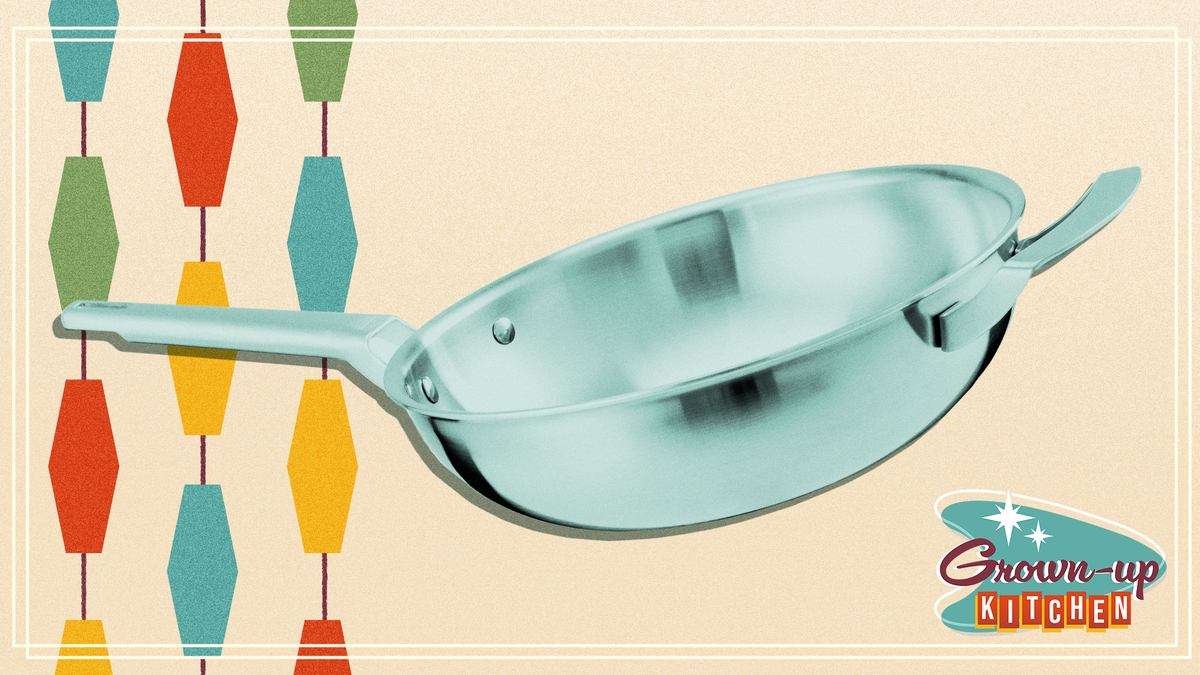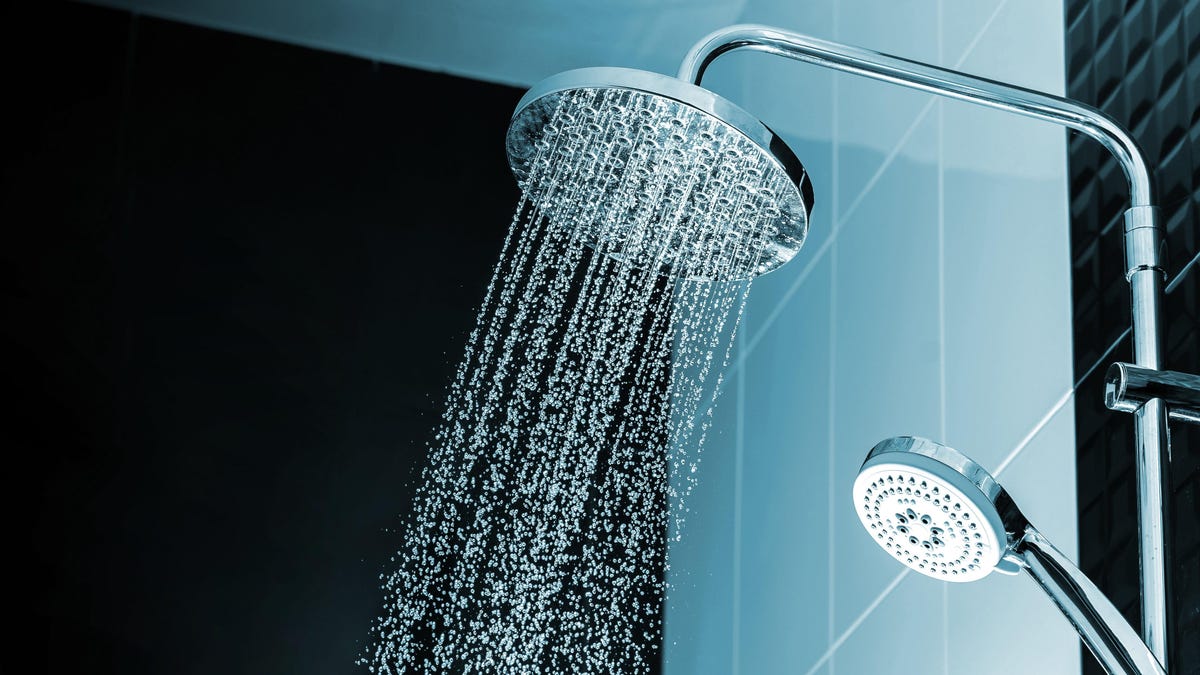How to Buy, Use, and Care for Stainless Steel Cookware
Stainless steel cookware is the journeyman of the kitchen. It quietly and competently does its job, without the need for pampering (like cast iron) or any public drama (like Teflon-coated nonstick). If cast iron is a flashy Leo who...

Stainless steel cookware is the journeyman of the kitchen. It quietly and competently does its job, without the need for pampering (like cast iron) or any public drama (like Teflon-coated nonstick). If cast iron is a flashy Leo who lives for praise, stainless steel is an efficient, self-assured Capricorn. (I’m not sure what sign nonstick is, but I want to say it’s a Gemini, as they have a flaky reputation and are rarely truly understood.)
I own one cast iron pan and a single nonstick pan, but the rest of my cookware is stainless. The shiny metal may seem intimidating to the baby home cook, but once you understand a few of its quirks, you’ll find it’s a super responsive, easy-to-clean-and-care-for material. Unlike cast iron, stainless can handle a prolonged simmer with an acidic tomato sauce, and can be tossed in the dishwasher afterward. You can sear, boil, braise, and steam—and even fry an egg without it sticking to the pan.
It’s more responsive and durable than cast iron
Cast iron is great at holding on to heat, but it’s not so good at letting go, and it takes a while for the whole pan to reach its target temperature. Stainless steel, on the other hand, is more responsive. It heats evenly and quickly, and cools down when you need it to. When you turn the burner down, stainless steel listens.
It’s also patient. I can’t tell you how many times I’ve forgotten a greasy, sticky stainless sauté pan in the oven for days at a time. Does stainless steel sulk and whine by corroding or rusting? It does not. It sits there, unbothered, until you are ready to clean it, and not much cleaning is even required on your part. You can toss it in the dishwasher. If that doesn’t work—sometimes greasy, burnt-on food doesn’t respond to regular detergent—a quick scrub with Barkeeper’s Friend will restore it to its original gleaming glory.
I love my cast iron, and keep a nonstick skillet around for truly lazy moments, but I would be perfectly happy in a kitchen that was stocked entirely with stainless, and I could get by with a mere three pieces. You could buy a full set, but a mature, grown-up kitchen doesn’t need as many pots and pans as you might think.
Stainless steel cookware is made of multiple metals
Stainless steel pans are not made of a single metal. They’re more of a metallic sandwich, with three or more layers of alternating materials. Something conductive (but reactive), like copper or aluminum, is slipped between layers of tougher, non-reactive stainless steel, to make a pan that heats evenly and responds quickly to temperature adjustments, but won’t corrode, tarnish, or warp with extended use, hot dishwasher cycles, or acidic ingredients.
With one exception, you want cookware that’s “fully clad,” meaning the layer of conductive metal extends to the slides and rim of the cookware, rather than a single puck that sits at the base. This ensures an even temperature throughout the entire pan or pot, so you don’t end up scorching your food on the flimsy, unclad edges of the pan.
Start with three pieces
That 12-piece stainless steel set you saw at Macy’s may look awful tempting, but you’re better off spending a little more on fewer pieces that will last you longer. Those sets are rarely fully clad, and you don’t need that many pieces anyway. Most home cooks can get away with three pieces of cookware: A 10- or 11-inch sauté pan or skillet, an eight-quart (or larger) stock pot, and a three-quart saucepan or saucier. Stainless steel is usually compatible with every type of burner, though not all are compatible with induction, so make sure yours is induction-compatible if that’s what you’re working with.
Get a quality sauté pan or skillet
Though the terms are often used interchangeably, a sauté pans and skillets are two different things.
Skillets have sloped sides, so the food can slide up and around the edge, like a skateboard on a ramp. This makes it better suited for cooking where the food is always moving, like in stir fries or when, er, sautéing vegetables. (Do not yell at me. I do not make the rules.) Sauté pans have straight sides, making them ideal for searing and braising big pieces of meat, cooking and reducing sauces, or working with anything that tends to slosh.
They can be used pretty much interchangeably. I, a professional food writer, do not own a true sauté pan. In either case, make sure you have enough surface area—at least 10 inches—so you can sear large, bone-in steaks, roast a number of chicken thighs that will actually feed your family, or sauté a mess of mushrooms without crowding them. (Pack shrooms too tightly, and the moisture won’t evaporate quickly enough, resulting in steamed, rather than browned, mushrooms.)
The main thing to keep in mind is that sloped sides translate to a smaller amount of flat surface area, so add an inch or two if you go the skillet route, and make sure the sides come up fairly high, so you can reduce sauces and braise juicy meats without too much sloshing.
In the grand scheme of stainless cookware, a sauté pan (or skillet) is where quality matters most, and it should be the most versatile piece in your kitchen. Don’t worry so much about the number of layers in the pan. Instead, focus on getting a fully clad pan, so the whole piece responds to any and all temperature changes you make, and will ensure anything you sear or pan-fry is evenly browned. If you’re going to shell out some cash, make sure it has a warranty or trial period, so you can make sure the handle is comfortable to hold, and that you can handle it without any discomfort.
Some good starter stainless skillets and sauté pans:
Cooks Standard Classic Stainless Steel 5-Quart/11-Inch Sauté Pan with LidMade In Cookware 12-Inch Stainless Steel Frying PanTramontina 12-inch Stainless Steel Tri-Ply Clad Fry PanYou can skimp a little with a stock pot
Metal is expensive, and stock pots are big pieces of metal. Luckily, the stock pot’s primary functions are simmering, steaming, and boiling liquids, which keeps the temperature around 212℉—much cooler than the temperature required to sear food (which happens somewhere in the range of 300℉-500℉). While a fully clad stock pot will technically give you more control, you can get by just fine with something that has cladding only on the bottom, which will ensure your tomato sauce doesn’t scorch during a prolonged simmer. (Heavy bottoms are so important.)
Beyond that cladding, you’ll want a stock pot that can comfortably hold a whole chicken (for poaching and making stock), and accommodate long pasta shapes without needing to break them. Strong, sturdy handles that are comfortable to hold are also important, as water gets heavy pretty fast, and you’ll want to make sure you can fit not just your full, bare hands, but hands that are wearing oven mitts, in and around the handles. When choosing between riveted and welded handles, choose riveted for better endurance. You also want a lid that fits well and securely, to keep steam in and help bring water to a rapid boil.
The best introductory stock pots for easy simmering, steaming, and boiling:
Cuisinart MultiClad Pro Stainless Steel 12-Quart Stockpot with LidCuisinart Chef’s Classic Stainless Steel 8-Quart Stockpot with LidCook N Home 12-Quart Stainless Steel Stockpot with Lid ProfessionalA nice saucepan or saucier needn’t be too pricey
A saucepan or saucier is where you’ll make your sauces (duh), but you’ll probably also use it to poach eggs, make reasonable amounts of soup or stew, cook oatmeal for breakfast, or whip up a rich, eggy custards and curds for dessert. Unlike noodles or potatoes bopping around in a stock pot, food prepared in a saucepan or saucier is more likely to be in continuous contact with the base and walls of the pan, so full cladding is a little more important. Luckily, both are smaller than stock pots, so you can afford the extra metal.
Much like sauté pans and skillets, saucepans and sauciers are a little different. The sides of a saucepan are straight; the sides of a sauciers are sloped. I prefer a saucier, as the rounded edge makes stirring and whisking a little easier, and ensures food doesn’t get stuck in the corner between the wall and base. You will sometimes seem sauciers referred to as “sauce pans,” even by the companies that make them; looked for rounded bottoms and you’ll be fine.
In terms of size, three-quarts is the sweet spot. Large enough to make a reasonable amount of food, but not so big that it feels unwieldy when warming smaller batches of soup or sauce. You’ll also want a lid that fits well and a handle that feels comfortable, with a lip that allows for easy, clean pouring.
Serviceable sauciers that won’t break the bank:
Tramontina Tri-Ply, 3-Quart Covered Sauce PanMisen 5-Ply, 3-Quart Stainless Steel Saucier with LidHow to keep your food from sticking to stainless steel
The biggest worry people have when cooking with stainless is that their food will stick, and it certainly will if you don’t know what you’re doing. It is, however, perfectly possible—easy even—to fry an egg or piece of fish in a stainless steel pan without either one sticking. You just have to get it hot enough.
I’ve discussed this topic at length before, but just to re-cap, it all boils down to the pan’s pores:
Stainless steel is a porous material, and these pores expand and contract with temperature variations. When you place cold food on a hot pan, the difference in temperature causes those pores to quickly contract, gripping onto your food.
Further complicating the issue is the fact that proteins, including raw meat and egg whites, bond with the metal in your pan. Eggs are especially tricky, because they come out of the shell as a liquid that can flow into those tiny pores, strengthening their grip on your egg.
It sounds like a recipe for sticky disaster, but heating your pan to the right temperature will create a barrier between your food and pesky pores—and we owe it all to the Leidenfrost effect.
The Leidenfrost effect is one of my favorite effects to talk about, because understanding it makes one feel like some sort of cooking wizard:
The Leidenfrost effect occurs when the temperature of a given material is much hotter than the boiling point of the liquid coming into contact with that material. It allows you to dip your wet fingers into molten lead without getting burned and, less dramatically, to cook an egg in a stainless steel pan. The high temperature of the metal vaporizes the liquid, creating a protective layer of steam between the metal and your food (or fingers) and keeping the liquid egg white from making full contact with the pan and seeping into its pores.
The easiest way to test if your pan is hot enough to cook an egg is to add a drop of water to it. If it sizzles and steams, your pan is not hot enough, and the Leidenfrost effect has not occurred. But if that drop of water seizes up into a little ball that rolls around the pan, you’re ready for action. If it breaks up into a bunch of little balls, however, the pan is too hot. Let it cool and try again. (This test is often called “the mercury ball test,” because the ball of water kind of looks and behaves like a drop of mercury.)
You can see the difference between an improperly heated and properly heated pan in this TikTok video I made:
Once the pan is properly heated, you can add your fat, and you really don’t need that much. Oil or clarified butter works best (“regular” butter will burn), and a thin coating of fat will create an even protective layer between the food and the pan, and allowing you to scramble eggs or pan-fry fish without any stickage. (Fat also conducts heat, which is famously helpful when cooking food.)
How to clean stainless steel cookware
As I mentioned earlier, cleaning stainless steel is not difficult. Toss it in the dishwasher, soak it in the sink, but steer clear of abrasive powders, harsh chemicals like bleach, or physical scrubbers, like steel wool, which can damage the finish.
Cleaning your pan quickly is the easiest way to ensure nothing gets stuck on the surface, but lazy, forgetful people such as myself need not despair. If your stainless steel pan gets truly gunked up, a little Bar Keeper’s Friend will get you out of a sticky mess.
Stainless steel may not have the folksy charm of a well-seasoned cast iron pan, but when it comes to versatility, ease of use, and journeyman-like attributes, it’s hard to beat stainless. (Plus, there is nothing more impressive than frying an egg in a gleaming metal pan, and impressing people is very grown-up.)

 Hollif
Hollif 
































